STEPS
TOOLS
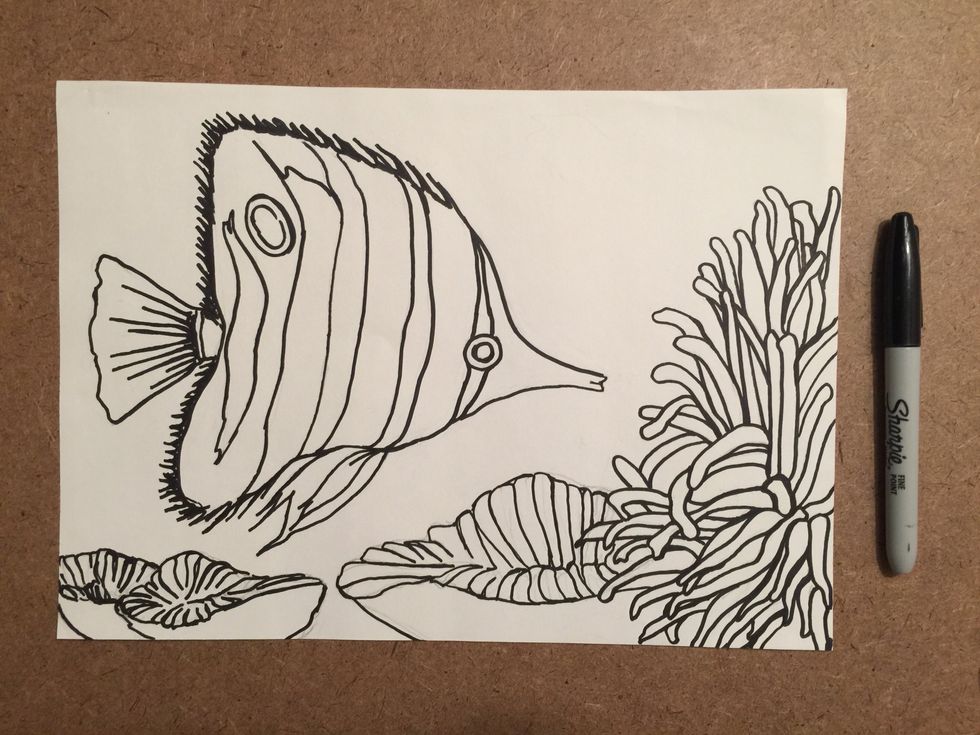
Create a line drawing using a black sharpie marker.
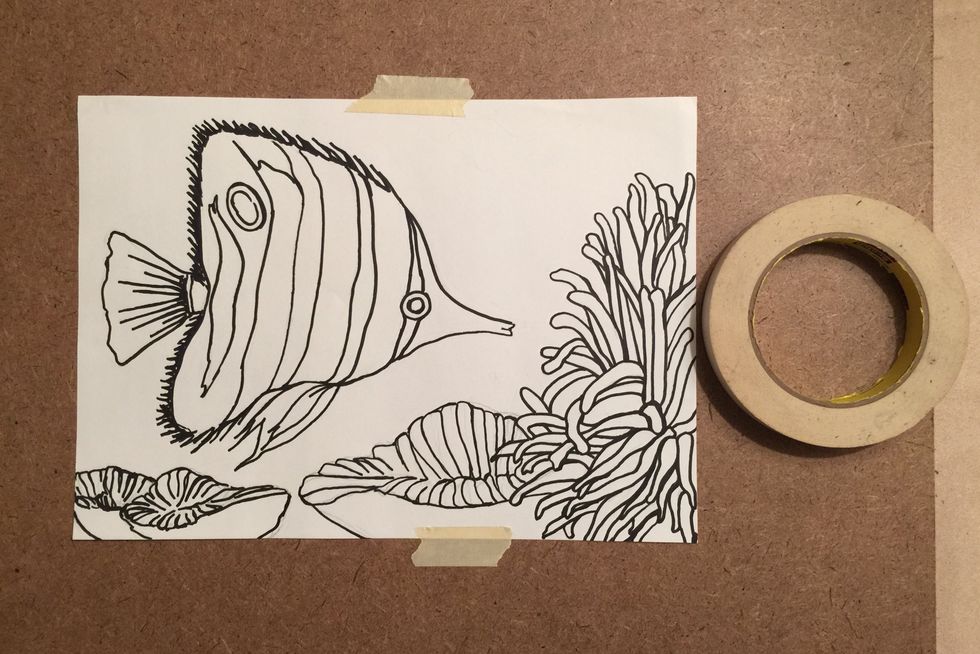
Tape the drawing down to a wood or masonite board.
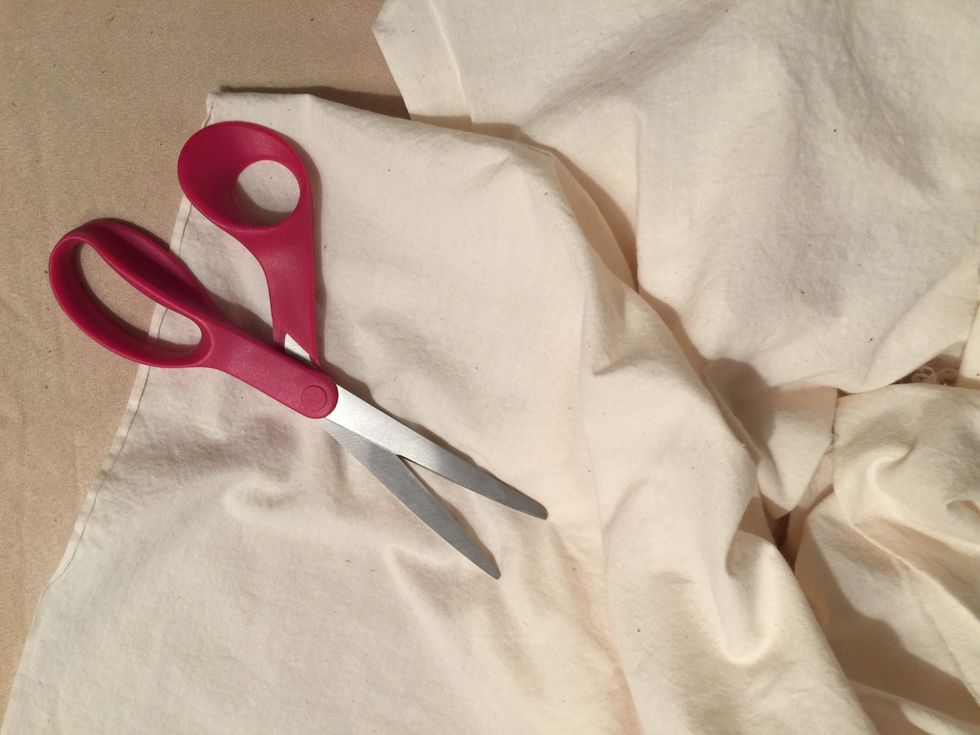
Cut a piece of unbleached muslin large enough to cover the drawing, leaving a 2 inch border around the drawing.
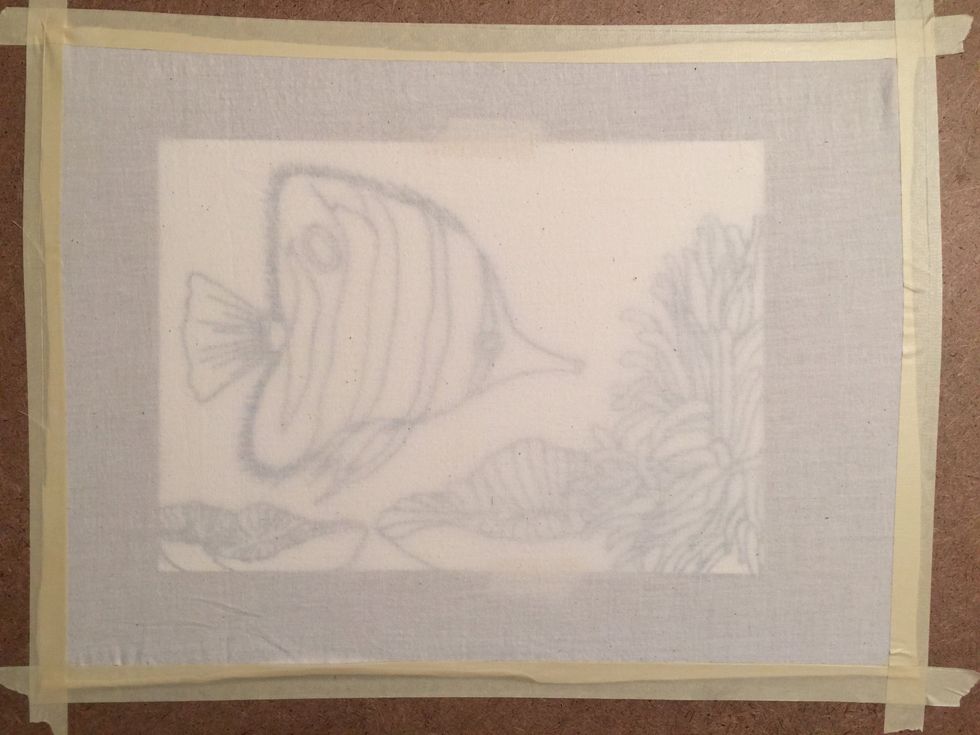
Tape the muslin over the drawing, pulling the fabric tightly as you tape it down.

Paint over all of the lines using a small bristle brush and blue gel glue. Any place that you apply the glue will remain masked and will be white in your final batik.

This is what it should look like when the glue painting is complete.
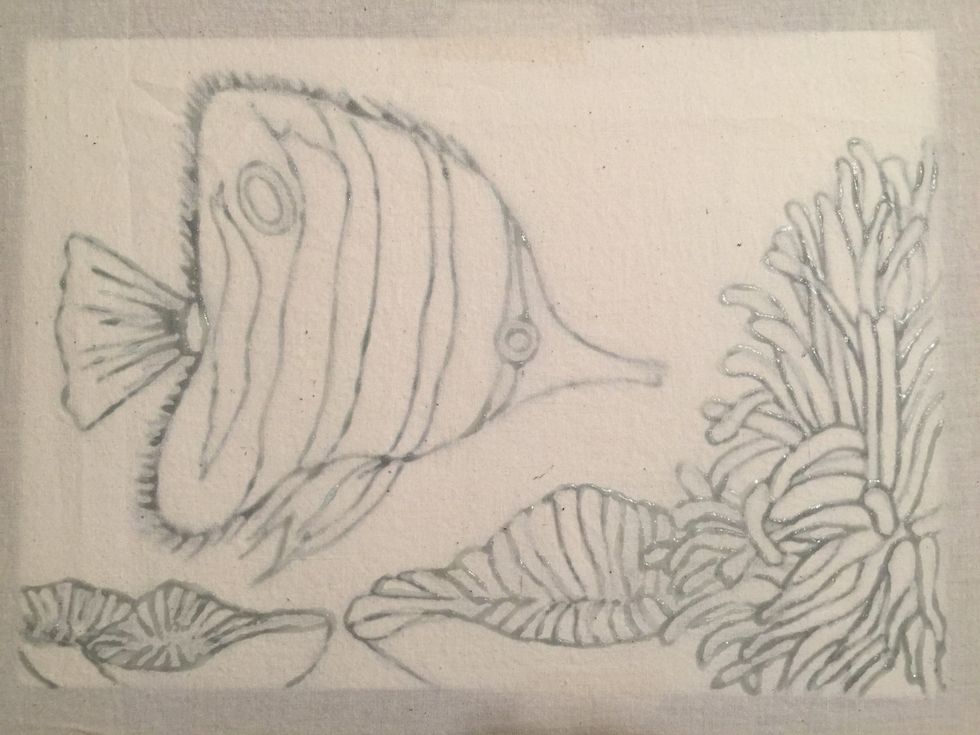
Although the glue will dry clear, you will still be able to see the pen drawing underneath and use it as a guide while you are painting with the tempera paint.
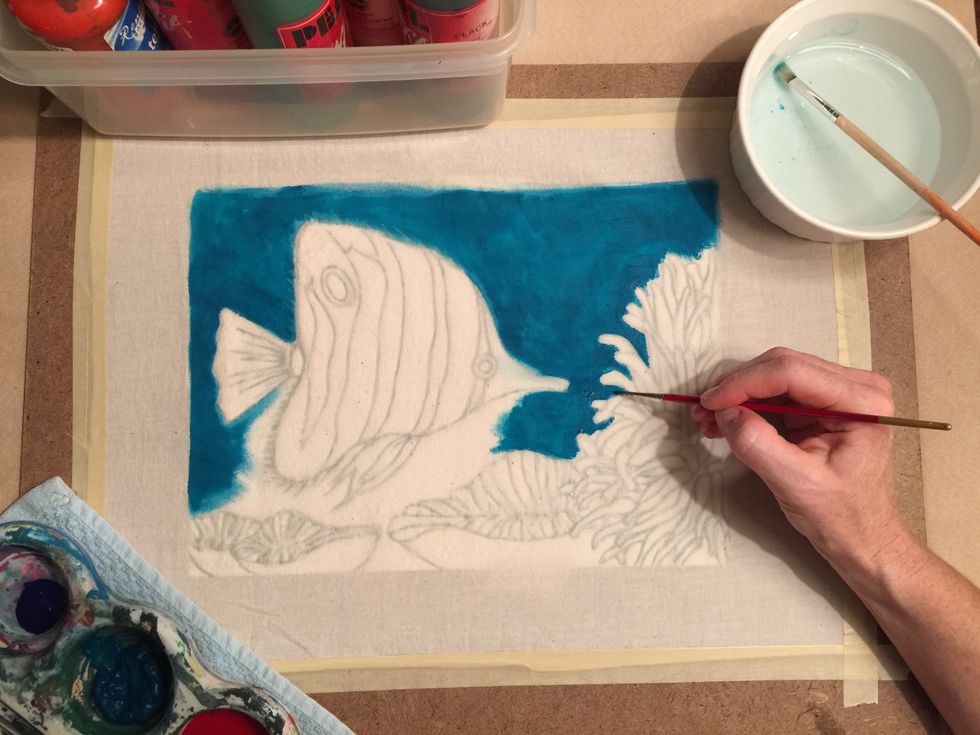
Use tempera paint to paint over the muslin fabric.

Remember, the first application of paint will be the color that soaks into the fabric. Any tempera that you "layer" on top will eventually be washed away and will not affect the finished piece.
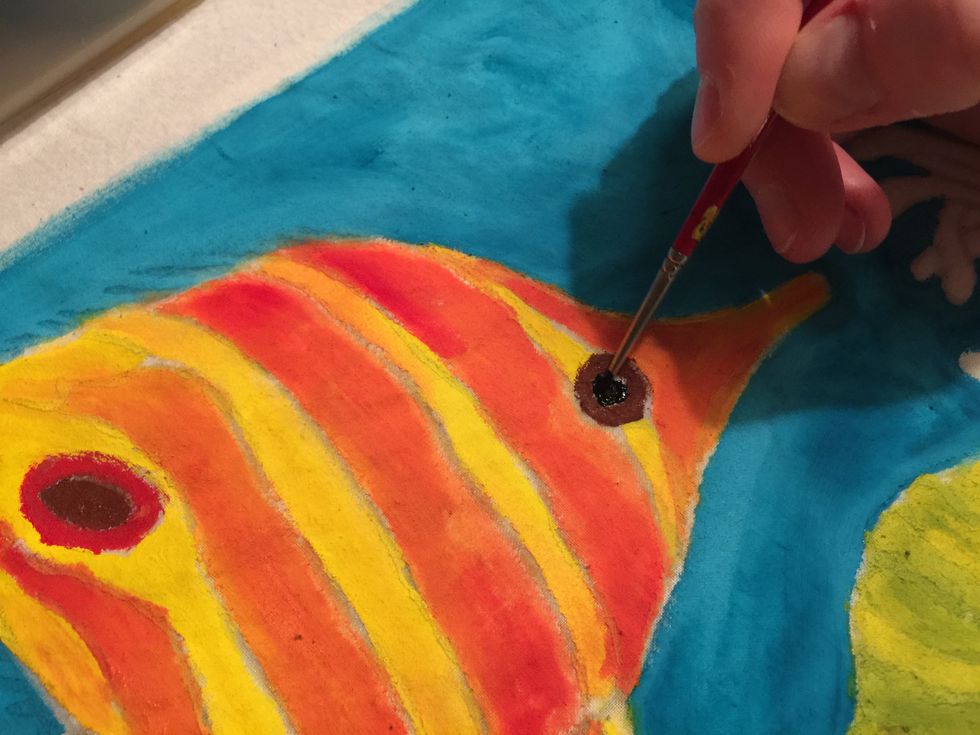
You can paint "in the lines" if you wish, or you can experiment by painting over the lines, remembering that all of the glue lines will be white in the final piece.
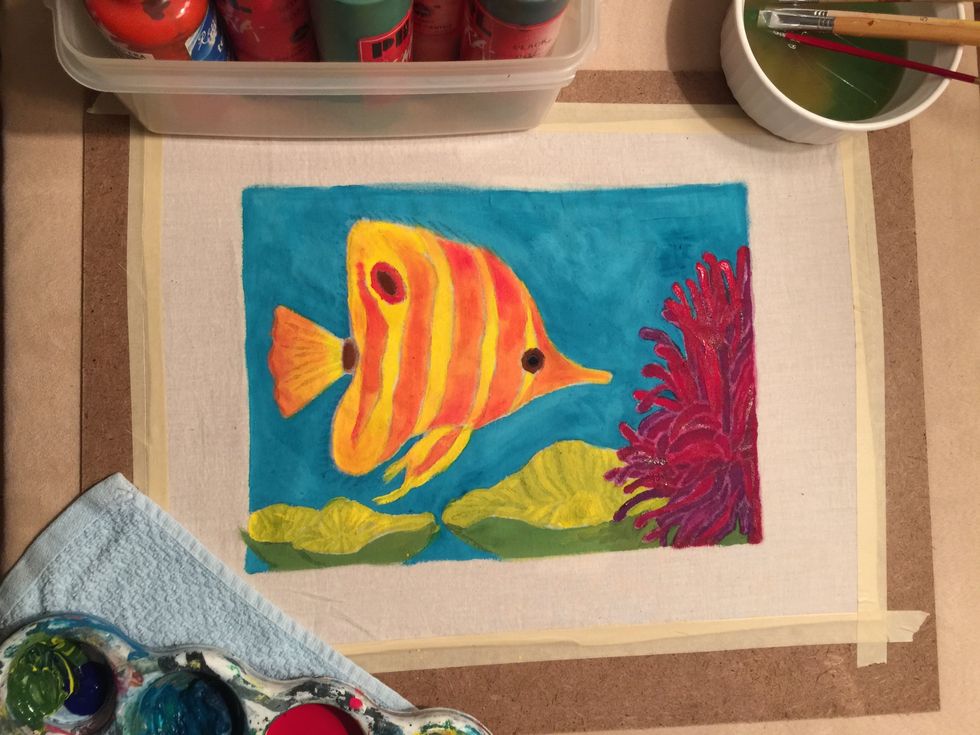
The finished painting should look something like this, with no fabric left showing. Let the paint fully dry (I like to let it dry and stain the fabric overnight).

Soak the painting in a tray of warm water.
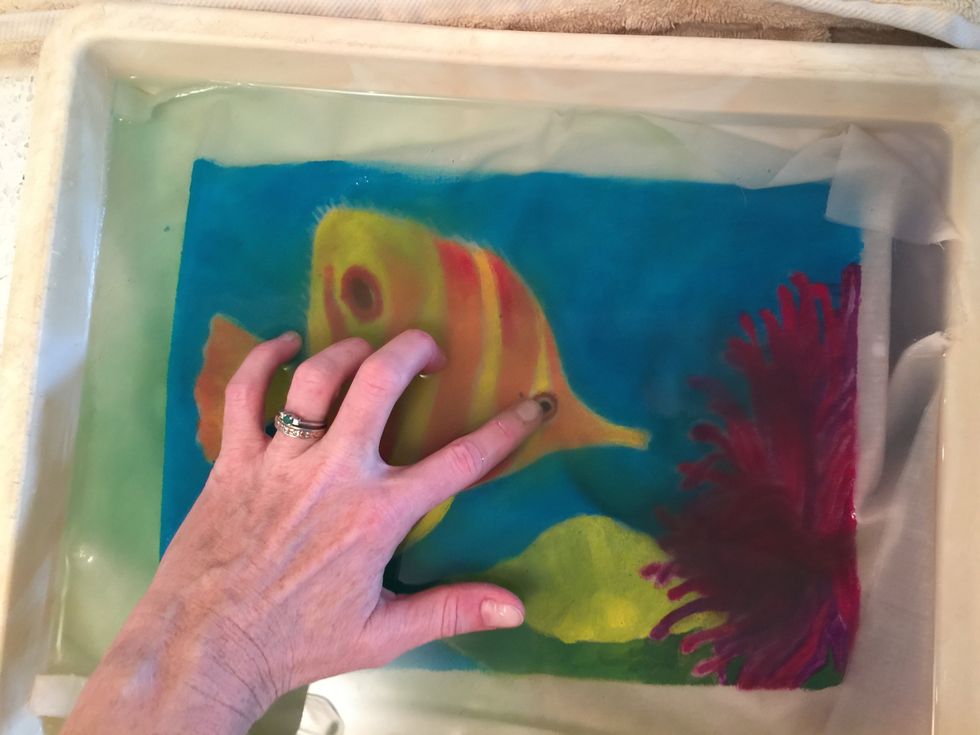
Gently rub off all of the glue and excess tempera paint. When you are sure that all of the glue is gone, blot it dry between two towels.
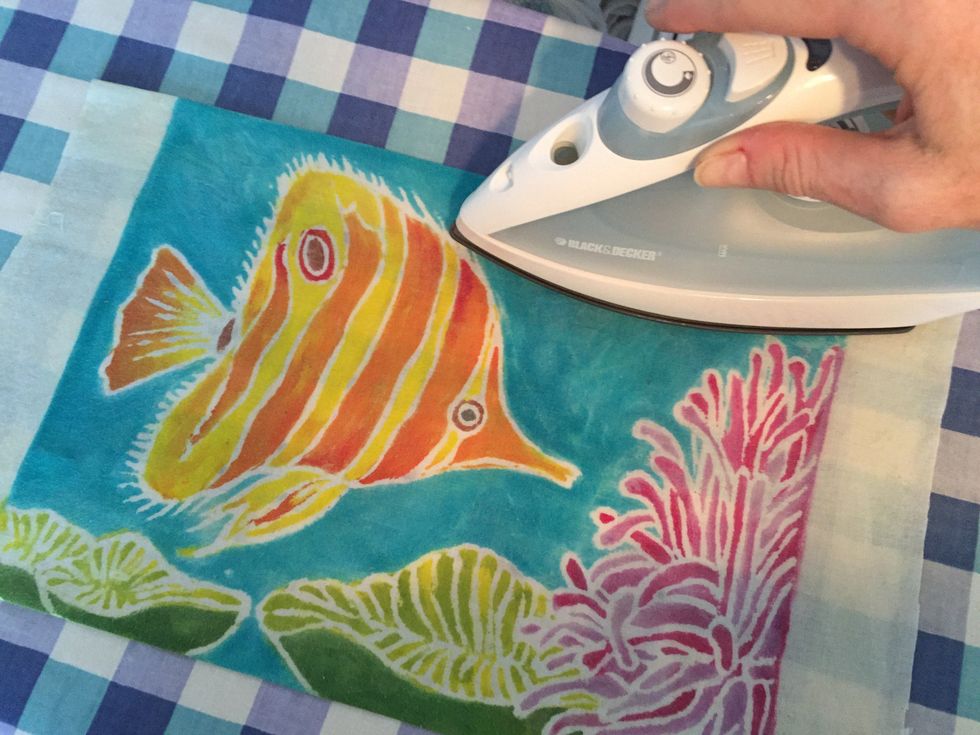
Use an iron to press the borders under. If you have painted a neat edge, you can leave a bit of the plain muslin showing to create a white border. You may also sew on some beads after this step.
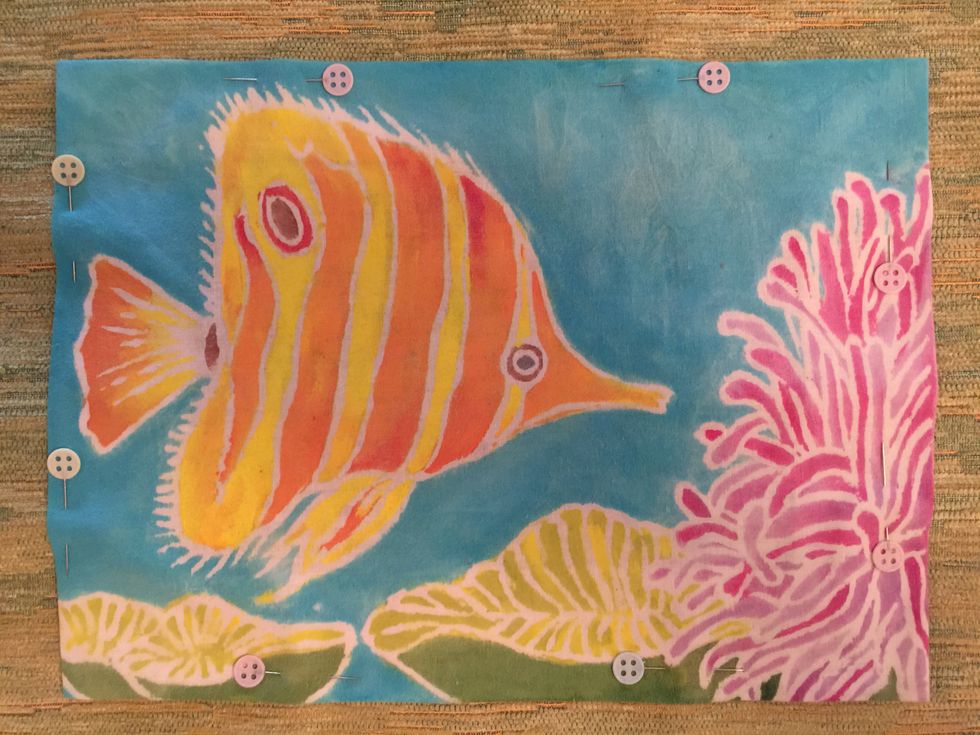
Pin the painted muslin to another piece of decorative fabric.
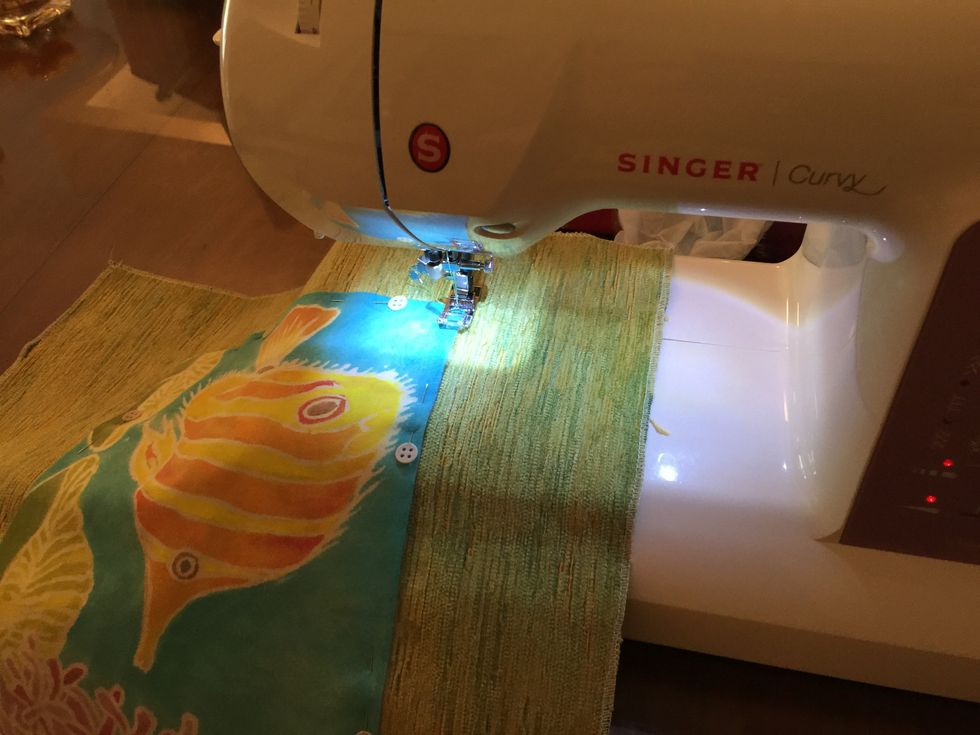
Sew the painted muslin onto the decorative fabric.
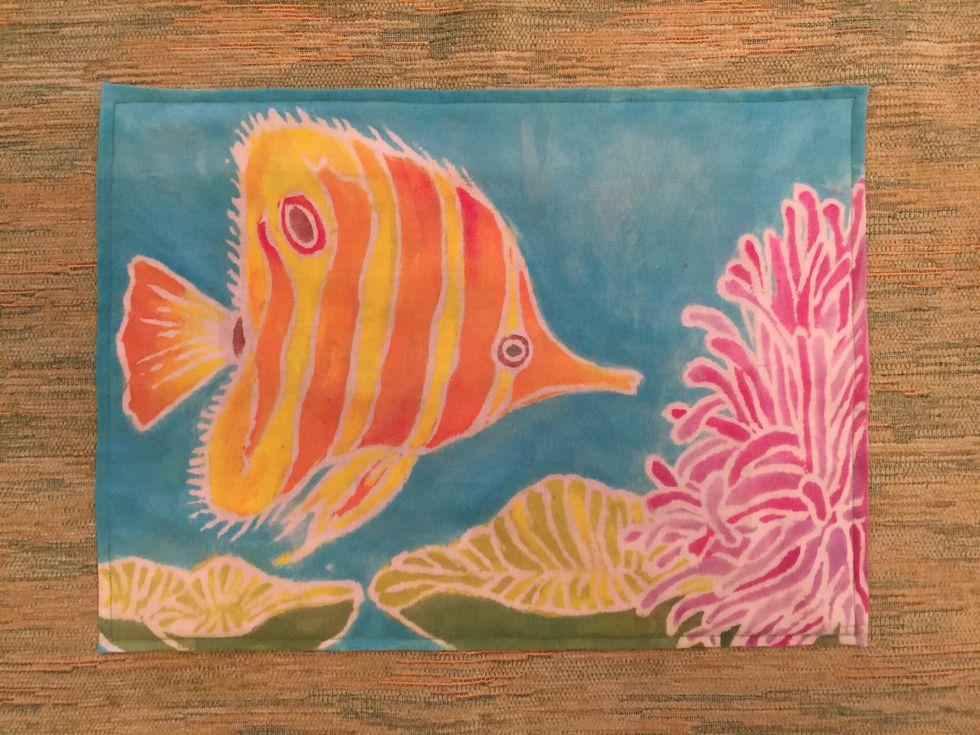
The finished front of the pillow should look like this.
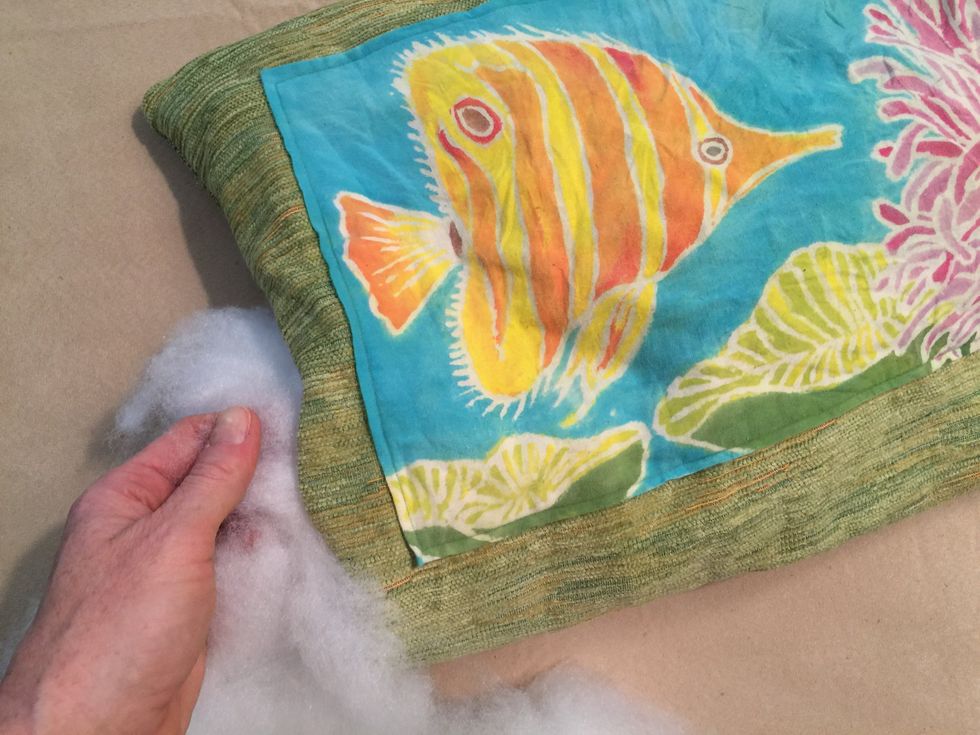
Back the pillow with another piece of decorative fabric. It doesn't have to be the same fabric; it could be a fun contrast to the front. Stuff it with Polyfill.

Enjoy your pillow!
- White Drawing Paper
- Sharpie Marker
- Unbleached Muslin
- Scissors
- Masking Tape
- Blue Gel Glue
- Bristel Brushes
- Tempera Paint
- Thread
- Sewing Machine
- Beads (optional)
- Decorative Fabric
- Polyfill Stuffing
The Conversation (0)
Sign Up